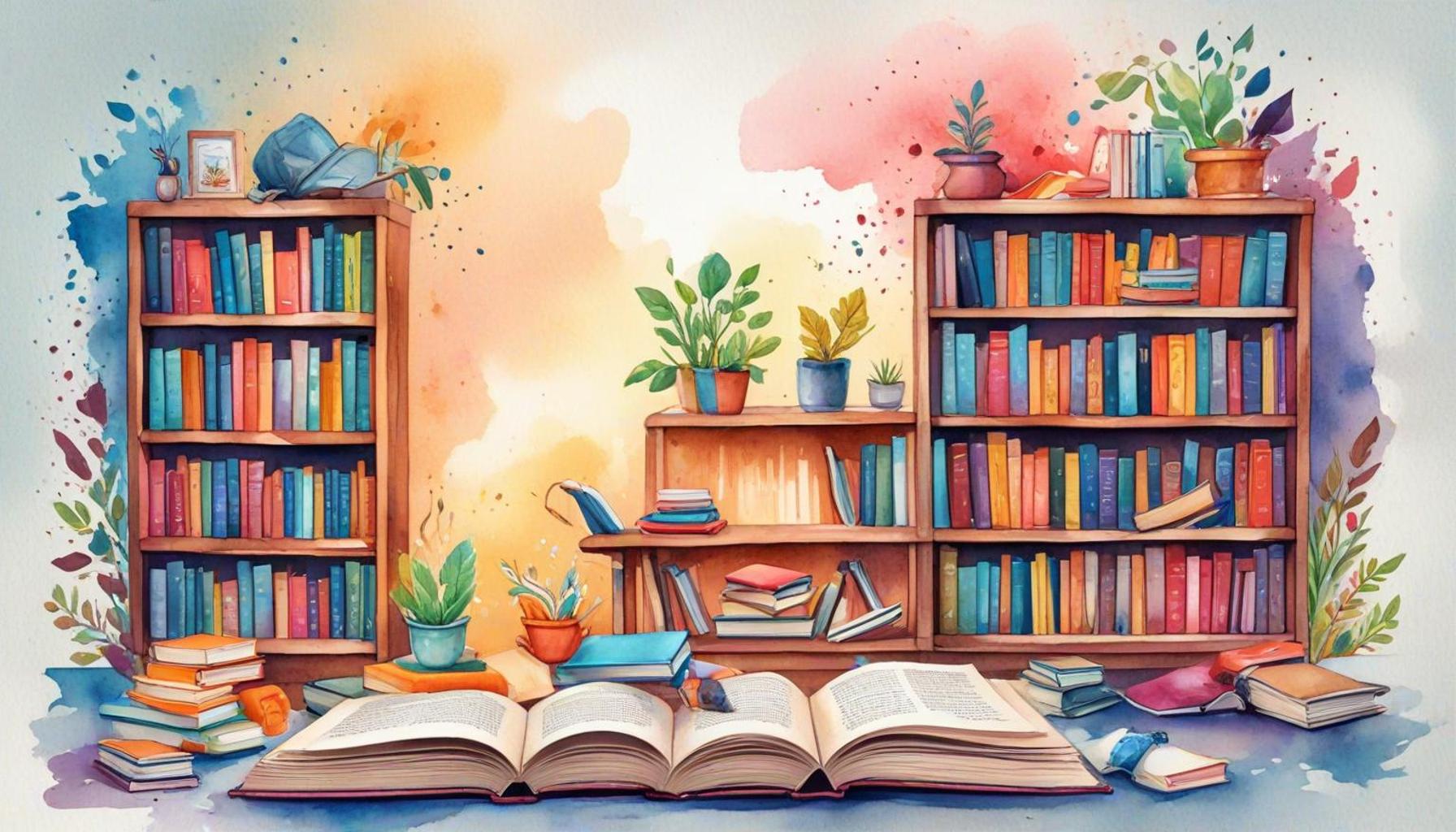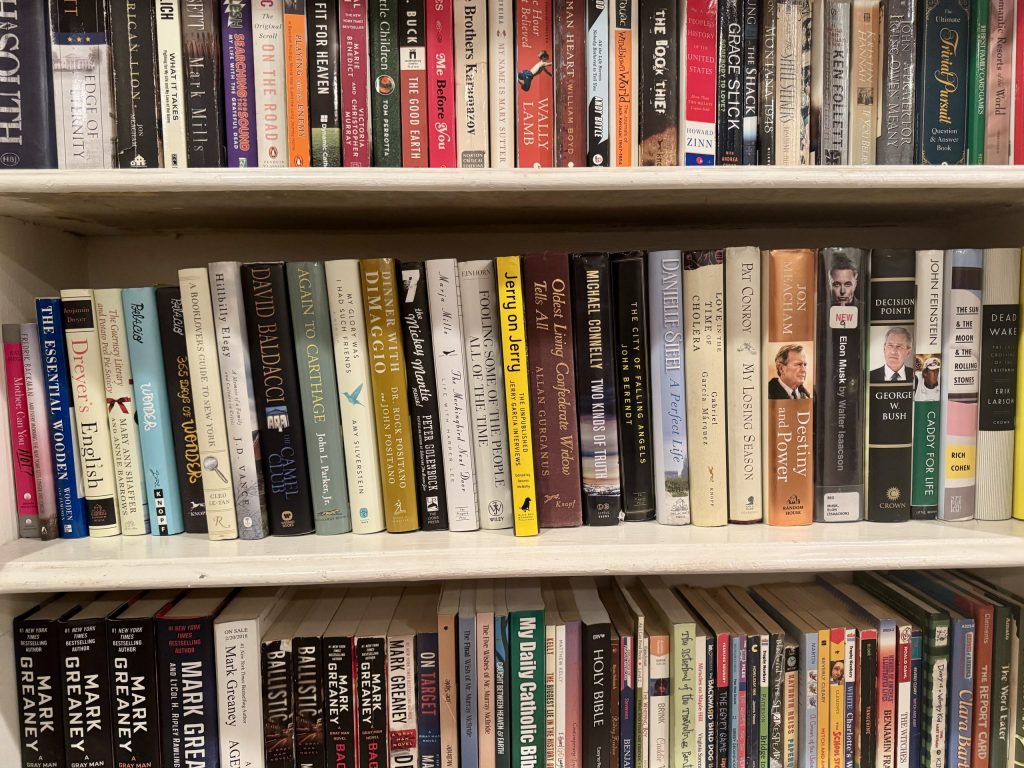Decluttering Books: Tips for Organizing Your Shelf and Reviewing Your Reading

The Importance of Decluttering Your Bookshelf
Books can indeed be a source of comfort and knowledge, serving as gateways to countless worlds and ideas. However, as your collection expands, it can transform from a treasure trove of literature to a daunting accumulation of clutter. A cluttered bookshelf not only consumes precious space in your home but also complicates the process of finding those volumes you truly cherish, ultimately affecting your reading experience.
Essential Steps to Reclaim Your Shelf
Starting the decluttering process can feel overwhelming, but breaking it down into manageable steps makes it easier. One effective first step is to assess your collection. Take a moment to examine each book. Ask yourself questions like, “Does this book still resonate with me?” or “Have I read it and loved it?” By identifying which books you truly love or intend to read, you can begin to sift through your collection with more clarity.
Next, set clear goals for how many books you’d like to retain. Some people find it helpful to aim for a certain number, such as 50 or 100, while others may prefer a more fluid approach that allows for spontaneous additions. This goal should align with your lifestyle, reading habits, and available space, ensuring you’re not holding onto books out of obligation or nostalgia.
Organizational Techniques to Consider
Once you’ve narrowed down your selection, it’s time to develop a system for organizing your remaining books. There are numerous strategies to consider, and finding one that resonates with you can make all the difference. For example, some readers prefer to categorize their books by genre, creating a straightforward browsing experience. Others might opt for arranging their shelves by author for a more coherent display of literary contributions.
Alternatively, some enjoy the vibrant aesthetics of organizing by color, which can turn a simple bookshelf into a stunning visual centerpiece. Whichever method you choose, make sure it aligns with your personal style and is easy to maintain in the long run—after all, the ultimate goal is to create a space that feels inviting and reflective of your reading tastes.

Reflect on Your Reading Habits
In addition to physical decluttering, revisiting your reading habits can enhance your overall experience. Keep a reading list to track books that pique your interest, and set aside time to periodically review this list. Reflecting on your preferences and interests can help ensure your collection remains relevant to your evolving literary palate. Think of this process not only as decluttering but as curating a personal library that invigorates your reading journey.
As you embark on this decluttering journey, you will find that refreshing your space revitalizes both your shelves and your reading experience. The strategies outlined here not only simplify your bookshelf but also lead to a more focused and enjoyable interaction with the books you love. Let each shelf tell your unique story! With these tips in hand, take the plunge and breathe new life into your bookshelf.
DIVE DEEPER: Click here to discover how mindfulness can boost your productivity
Strategies for Effective Book Decluttering
When embarking on the journey of decluttering your bookshelf, it’s crucial to apply strategies that align with your personal philosophy about books and reading. This endeavor is not merely about discarding volumes; it’s about curating a space that reflects your literary journey, enhances your reading experience, and offers a welcoming atmosphere to explore stories anew.
Choosing Your Decluttering Method
Every book lover has a unique relationship with their collection, and selecting the right decluttering method is essential to successfully downsize your shelves. Here are a few strategies to consider:
- The Marie Kondo Method: Inspired by the popular decluttering guru, you can evaluate each book based on whether it “sparks joy.” This method encourages you to keep only those volumes that truly resonate with you.
- One In, One Out: To stem the tide of accumulating books, commit to a “one in, one out” rule. For every new book purchased or gifted, consider parting ways with another, maintaining the balance on your shelves.
- Daily Delimiter: Set aside a few minutes each day to assess a single shelf or even a small pile of books. This incremental approach reduces overwhelm and makes the decluttering experience more manageable.
- Time-Tested Reads: Focus on books that have remained unread on your shelf for over a year. Evaluate whether you truly intend to read these books or whether they can find a new home with someone who might appreciate them.
Determine What to Keep or Let Go
Once you choose your decluttering method, the next step is to decide what books hold value in your life. This can lead to some difficult choices, especially if you have sentimental attachments to certain titles. To ease this process, here are a few guiding questions:
- “Have I read this book and do I plan to reread it?”
- “Does this book contribute to my current interests or goals?”
- “Does it hold a sentimental value that outweighs its space on my shelf?”
After this evaluation, create three categories: Keep, Donate, and Sell. The “Keep” pile will harbor your cherished volumes, while the “Donate” and “Sell” categories can provide avenues to pass your books along to new readers. Consider donating to local libraries, schools, or community centers, ensuring that your beloved books can inspire others.
Adapting to Change
As your reading tastes evolve over time, it’s crucial to acknowledge that your library may need to adapt, too. Keeping your collection dynamic reflects your growth as a reader and allows for the introduction of new titles that align with emerging interests. Embracing this fluidity can make the decluttering process a rewarding continuous cycle rather than a one-time chore.
By utilizing the methods outlined above, you can confidently navigate through your bookshelf, cherish the books that matter most, and create an organized space that invites even more enjoyment from your reading adventures.
As you dive deeper into the process of decluttering your bookshelves, it’s essential to adopt effective methods that not only help you organize but also enrich your reading experience. One significant strategy is the implementation of a categorization system. By sorting your books into genres, themes, or even personal favorites, you create an intuitive layout that facilitates easy access to your books. This not only saves time but enhances your reading enjoyment as you can easily locate the book that matches your current mood or interest.
Another key aspect of this decluttering journey is the practice of regular reviews. Schedule a consistent time, perhaps once every season, to assess your collection. Ask yourself whether you are genuinely interested in rereading a particular book. If not, consider donating it to a local library or passing it along to a friend. This not only helps reduce clutter but also allows someone else to benefit from the stories that no longer resonate with you.
Furthermore, keep in mind the importance of a reading log. Utilize a journal or digital application to track your reading progress, jot down brief reviews, and note the key takeaways from each book. This habit does not just keep you organized; it also builds a personalized reference that you can look back on for inspiration or recommendations in the future.
While organizing, consider the aesthetic aspect as well. Use decorative boxes, shelves, or bookends that reflect your personality, making your reading space more inviting and enjoyable. This emotional connection to your environment can motivate you to engage more with the books you own.
Decluttering your bookshelf is not merely about getting rid of books; it forms a unique opportunity to rediscover your passion for reading. It encourages a more mindful approach where each book becomes a cherished item rather than just another piece of clutter. By engaging with your collection and maintaining an organized space, you can enhance both your reading habits and overall literary appreciation.
| Category | Advantages |
|---|---|
| Categorization | Creates intuitive access, saving time and enhancing enjoyment. |
| Regular Reviews | Enables reflection on reading preferences and promotes sharing with others. |
| Reading Log | Keeps track of progress and key insights, fostering deeper engagement. |
| Aesthetic Organization | Creates a motivating reading environment that invites exploration. |
DISCOVER MORE: Click here to learn how to embrace minimalism
Creating a Functional and Inspiring Book Space
As you successfully curate your bookshelf, it’s essential to reorganize your remaining collection in a way that enhances both functionality and inspiration. An orderly bookshelf can transform your reading practice, making it easier to access both your beloved novels and your latest finds. Here are some effective organizational strategies to help you reinterpret your book space.
Establishing a Classification System
A well-organized bookshelf should reflect your personal taste and reading habits. Establishing a classification system is a key step in this process. Here are some methods to consider:
- Genre Sorting: A traditional yet effective approach is to sort your books by genre—fiction, non-fiction, fantasy, mystery, etc. This system allows you to browse based on your mood and interest.
- Author Alphabetization: For avid readers who often seek specific authors, alphabetizing by last name can simplify locating beloved works. This method may be especially beneficial if your collection boasts multiple works from singular authors.
- Color Coordination: For the visually inclined, organizing books by color may create an eye-catching aesthetic. This creative approach emphasizes the visual charm of your bookshelf and adds a personal touch.
- Using Reading Lists: If you keep a running list of books you want to read, consider designating a section of your shelf for these titles, ensuring they’re easily accessible and serving as a reminder to continue your literary journey.
Maximizing Your Shelf Space
In many homes, space can be a limiting factor when it comes to storing books. This makes it essential to maximize your shelf space effectively. Here are some practical solutions for creative storage:
- Vertical Stacking: Rather than simply lining books up horizontally, you can alternate between stacking books vertically and horizontally. This dual approach adds visual interest while also providing spots for decorative items or smaller plants.
- Floating Shelves: Installing floating shelves can create a unique display option that takes advantage of wall space rather than just floor space. This option also allows for an artistic arrangement that can serve as room decor.
- Storage Bins: If certain books are less frequently accessed, consider placing them in decorative bins or boxes on higher shelves. Label the bins for easy identification, ensuring they do not disrupt the overall aesthetic.
Incorporating Bookish Decor
While the primary function of a bookshelf is to store and display literature, it can also serve as a canvas for personal expression. Adding bookish decor can breathe life into your collection, making it an inspiring environment.
Consider incorporating items such as framed book quotes, photos that evoke literary memories, or unique bookends that showcase your personality. An organized shelf adorned with these elements transforms it into a curated gallery of your reading journey, inviting others to experience the stories within.
Regularly Reviewing Your Collection
Establishing a routine for reviewing your collection ensures that your bookshelf remains dynamic. Setting aside specific times to reassess your selection—perhaps every six months—can reveal volumes that may have fallen out of favor or new interests that have emerged. This approach keeps your collection relevant and allows you to maintain your reading goals. Additionally, using digital tools such as Goodreads or Bookly can help track your reading habits, making it easier to see what you want to keep and what needs to go.
With these ideas, your decluttering journey grows into a comprehensive strategy for maintaining both an organized shelf and an inspiring reading environment, unlocking new literary adventures at every turn.
DISCOVER MORE: Click here for innovative space solutions
Conclusion: Embracing an Evolving Literary Space
In a world where our reading habits and interests are constantly changing, taking the time to declutter and organize your bookshelf is not just a seasonal ritual, but a transformative practice. By establishing a personalized classification system, maximizing shelf space through creative solutions, and enhancing your collection with bookish decor, you are creating an inviting sanctuary for both you and your visitors. The process of curation fosters a deeper engagement with your literature, encouraging you to revisit old favorites while discovering new literary gems.
Moreover, regularly reviewing your collection, whether through digital tools or traditional methods, ensures that your bookshelf remains fluid and reflective of your current tastes. This continuous evaluation not only contributes to an organized space but also revitalizes your passion for reading, opening the door to new genres and authors you may have overlooked. By treating your bookshelf as a living entity that evolves along with you, you cultivate an enriching environment that inspires ongoing exploration and imagination.
As you embark on this journey of decluttering and reorganizing, remember that your bookshelf should serve not only as a storage solution but also as a canvas for your unique story. So, take a moment, grab that first book, and let your literary adventure unfold once more.


